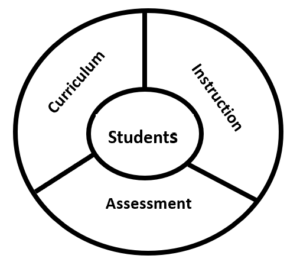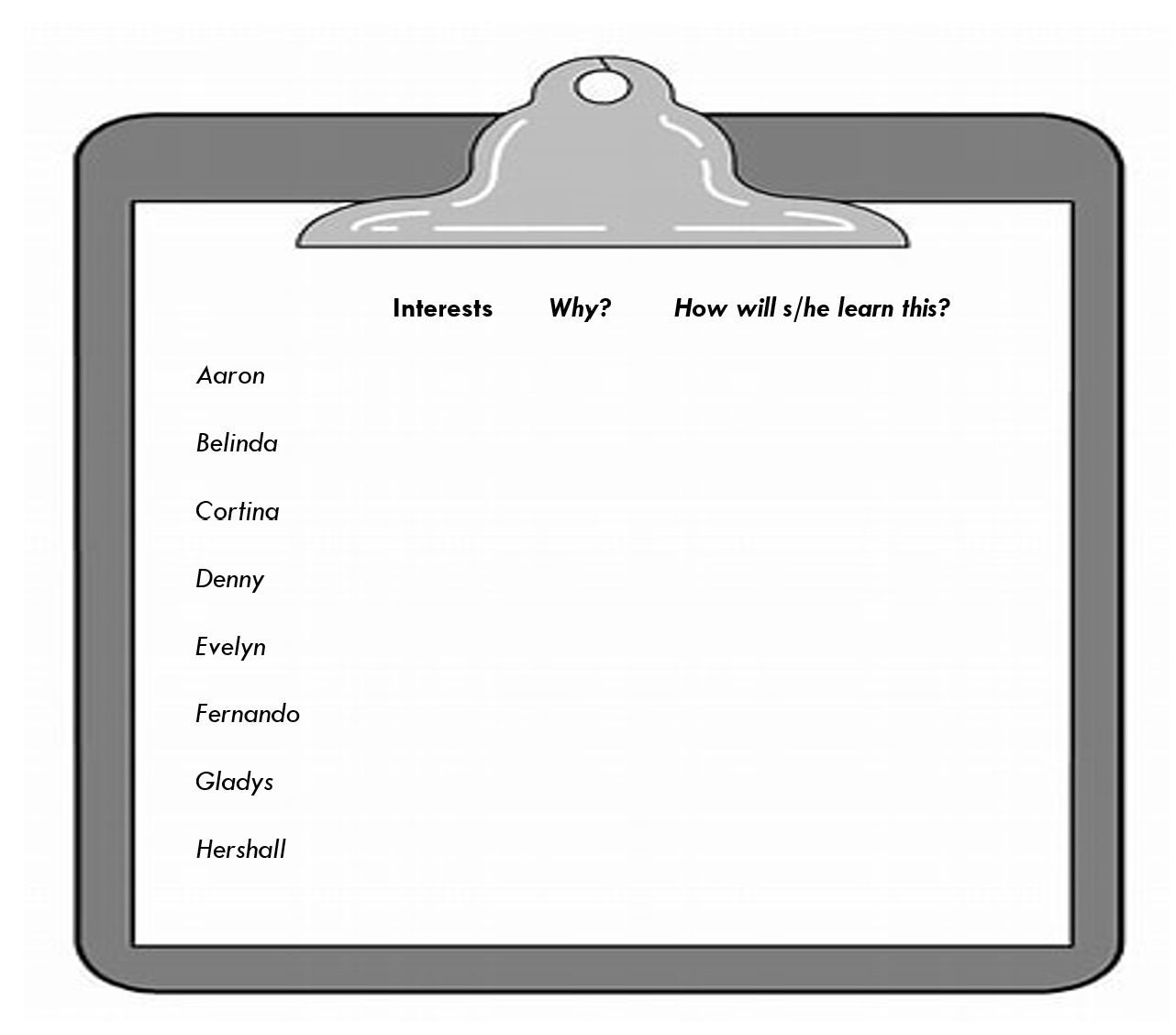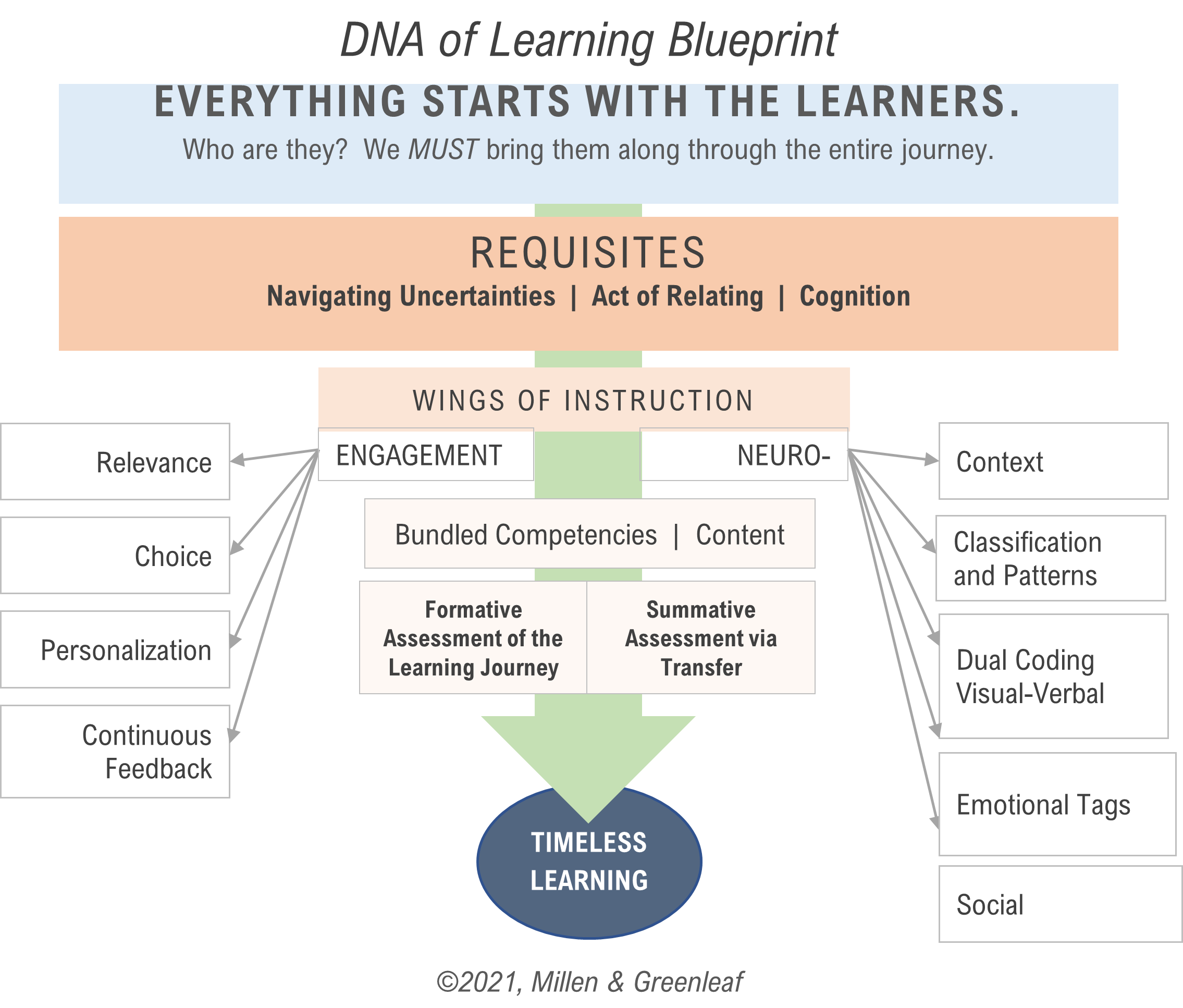
Kids Leading the Learning Journey
When Teaching Mirrors Learning Series
Unpacking The DNA of Learning Blueprint
©2023
Each article in this 15 part series systematically unpacks the DNA of Learning Blueprint for kindling the spirit of learning and re-starting our passion as educators. The collective series will represent a comprehensive outline of fundamental requirements for timeless learning across ages and disciplines.
Part 2: Kids Leading the Learning Journey
Knowing students well–very well, is the overarching umbrella that precedes all else to move learning forward. This is a simple concept that requires sophisticated thinking. Knowing students goes deeper than name, age, past schooling, and prior reports–it means understanding their wants and dreams; their interests and aspirations; their current personal goals and what is important to them as human beings. Knowing each student precedes knowing ways to teach things. Three simple strategies to gather information about students include interest surveys, conferring with students, and the long-tested strategy of K-W-L (asking students: what do you already know about the content/concept; what do you want to know/ need to know; and to reflect on, what have you learned?). Content, pedagogy, materials, and technology follow.
 |
The traditional curriculum, instruction and assessment diagram encircling “student” at the center is appealing, yet fundamentally flawed with respect to motivating learning. “How will I teach this” is not the same as “How will my students learn this?” More than knowing the curriculum and a toolbox of random teaching strategies, it is knowing how to engage each student’s thinking about the value of what is being taught to their life. Once teachers fully understand both the developmental and personal interests of the students, the lesson design then provides many opportunities for students to apply the learning to their own context. Sarah, a second-grade teacher in a rural elementary school, used a Walmart toy catalogue for a math lesson. Students were provided with a range of what they could spend on toys on a Christmas list and had the individual choice of how and what they wanted to spend their money. Interest …. totally! Choice and personalization….of course! Application of the objective of the lesson… YES! This intentional behavior leads to contextualizing learning, purpose, and transference whether it’s on-line or face-to-face. As neuro-experts suggest, where there is no meaning, there is no memory (Levitt, 2010).
Whose learning is it anyway? Touching Down in School
At the Thursday PLC meeting eighth-grade teacher, Mary, had asked to discuss Cortina, with the team. It was common practice to use the meeting to support individual teacher’s challenges with a student. Coffee poured; Mary began her case study. “Cortina is neither disruptive nor non-compliant. In fact, she could easily be missed in the classroom. She does just enough to get by, getting the grades she needs to pass. She does everything possible to avoid attention, preferring to work alone. Her posture pleads ‘don’t call on me, just tell me what to do and I’ll do it.’ She sees no purposeful reason to be in school. She openly tells me how long and boring her day is. Cortina distances herself emotionally and has no friends at school. Over the years she has acquired little substantive learning that really matters to her.”
We see “Cortinas” every day, recalling what they did or didn’t do, but… do we really know them? Beyond the physical presence and disposition, look inside… do we know what matters to her, what makes her tick? How might we gain insight into what’s relevant to her, so learning could be applied and motivating? An increasing number of kids are feeling that they don’t belong, that school has little purpose for their lives. The pandemic may have exacerbated things, but… it’s not the reason. Under duress, we circled the wagons without direction. For example, abundant social-emotional-learning (SEL) programs were purchased in response to school closures and most often scheduled to teach kids about handling their emotions through a once-per-week session. Along with scripted academics these are insidiously impersonal. Why? What we know about the essentials of and for learning tell all. Do we really believe that unpacking an emotional circumstance, watching a short video, discussing feelings, and perhaps choosing a response to a situation will accomplish much in a 45 minute stand-alone lesson? The reality is that this is disjointed and irrelevant to the specific lives of children. Hearing about a fictitious character in a canned lesson does not hold a candle to what Denny experiences in his daily life. Engaging Denny will require comprehending his journey, demonstrating understanding, and addressing his emotions directly—not sharing feelings in a fictitious, impersonal example. Knowing each kid requires more than content coverage about emotions and patented handling of them in general.
Everyone notices the acting out or withdrawals, but no one effectively identifies the origins of why a given student is making such choices. The sustainable carryover of add-on programs is nonexistent. Energetic, inspiring teachers will entertain Cortina and may maintain her attention, however, long-term retention and understanding requires processing while attending, not just quietly spectating (Greenleaf, 2020).
Letting Go and Moving On
Understanding a student’s personal aspirations has a profound impact on classroom culture, emotional health, engagement and learning outcomes. Committing initial and ongoing energy into connecting with students is far more productive than spending energy containing behaviors and implementing new programs (Millen, 2022).
With community building prioritized, we must initially put curricular goals on the back-burner while we build knowledge of self and others. We promote and support interest, motivation, and personalized learning. This is embedded, not scheduled weekly. We stay tuned to Cortina beyond “let’s get acquainted” exercises and inventories. Unpacking what is essential to a relationship that can be trusted to receive coaching on how to learn instead of regurgitating unremarkable content precedes all else.
Home-schooling: Getting to know my granddaughter…well!
Caitlyn, while being home-schooled during the pandemic, was instructed to read at levels D or E in the program provided on the school-owed tablet that was sent home. These letter designations were due to her performance at school prior to the 2020 COVID induced closing of school. I noticed that she had started several stories and left them incomplete. Upon looking through the various story choices at her assigned levels, I quickly summed up that she had interest in precious few. When asked why some were not done, she said that she didn’t like the stories, didn’t know the answers to the questions that followed them, and besides, her friends were reading at different (often higher) levels. Now knowing my student (granddaughter) better, I asked what she would like to read about. After she mentioned a few things, we looked beyond levels D, E, F and G in the program before we identified possibilities. Prefacing our leap into more difficult levels of text, I said, “We are likely to run into some words that you will not be familiar with. We will write those words down, make a vocabulary game, and work to understand them.” Given heightened interest, she readily agreed. As we proceeded, she embraced unknown words, writing them on our home-made vocabulary game sheet. With heightened interest she wanted to know the words. We played several times each day. Before long Caitlyn moved ahead to levels H and I with fluency (along with comprehension) and we added levels J, K and I in search of personally motivating options. We moved seven levels in three weeks. The classroom teacher was correct about Caitlyn’s initial reading level. What was not available in her instructional setting was a conferring support that could coach her progress in reading through her passions. With interest as the driver, she became an independent reader that spring!
Through Student Passions
We’ve all heard the phrase, “it’s easy to do, if you know how to do it!” From our students perspective– imagine being exposed to new content every day and then being tested on it shortly after. What if there’s no personal value discerned regarding the information? What if relevance to their current life or future escapes them? As with Caitlyn, the role of the teacher can make the difference by:
- making connections with students by identifying and articulating essential learnings
- recognizing personal passions/aspirations/hopes of students that connects to their learning
- anchoring teaching and learning with relevance to students.
What this means to our present practice is anchoring the targeted big ideas of learning to relevant applications for students. It means shifting…
FROM: Starting the lesson with a focus on what students will do to meet the objectives/requirements… “Open your books, workbooks, papers and discuss/write/explore the impact of culture on… Then read and answer the following questions, etc…”
TO (example): Starting the lesson with questions about how kids see the impact of culture on them. “Do you think what we wear, our fashion preference, is influenced by our culture? What else do you think is influenced by our culture? We then write ALL their thoughts on the white-board, validating their thinking. We model an acceptance of opinions–that all views are important. No judgment. Because we have spent time getting to know our students’ interests, we can readily use their examples for application: “Mel, you are interested in fashion design?” (Saul-a truck driver; Joan-a writer). “Why would culture be important to your work?” Stimulating thinking across varied interests and comparing differences in many areas will help construct a deeper understanding of how the lesson concept is useful and can be applied across all disciplines (Millen et.al. 2010).
As students are prompted to direct their own learning, they will engage with greater relevance, interest, motivation, and context than if we take charge through a singular focus—the day’s objective. This extends thinking for transference. Nothing replaces embedded personal interactions! The more acutely we understand their passions, the more accurately we can identify cues that hold meaning for them.
Moving to Tomorrow…
Step 1: Continually learn more about students what’s and why’s
Step 2: Keep a “transportable” clipboard to remind yourself of students’ specific interests
Step 3: Always remember, “How will I teach this?” is not the same as “How will my students learn this?”
We will not increase student success without the realization that learning STARTS with connecting with them first and developing a thirst for learning. After all, Cortina—and her classmates—are counting on us to know them… well!


Citations:
* Levitt, Patrick (2010). Lecture at R.I. Hospital. W.M. Keck Provost Professor of Neurogenetics at the Keck School of Medicine of USC.
* Greenleaf, Robert K. (2020). Principal Leadership, “The Importance of Connection in Isolation: Education’s Imperative Moving Forward,” September NASSP https://www.nassp.org/publication/principal-leadership/volume-21-2020-2021/principal-leadership-september-2020/the-importance-of-connection-in-isolation-september-2020/
* Millen, Elaine (2022). Personalized Learning. Paper presented to SAU #9, Conway, NH.
* Millen, Elaine; Greenleaf, Robert; Papanek, Doris; and Orvis, Sharyn (2010). Engaging today’s students. Greenleaf-Papanek Publications.